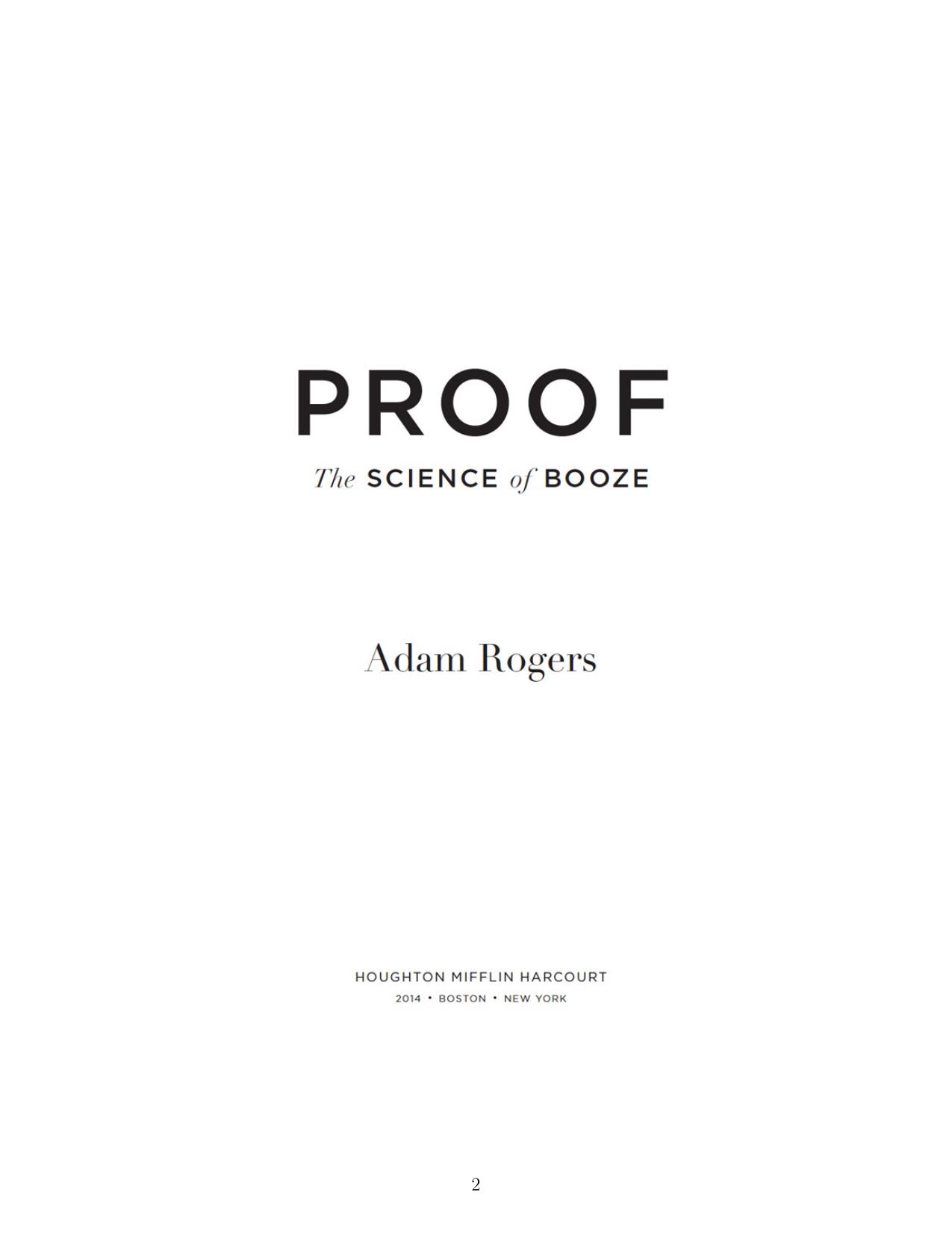Proof: The Science of Booze by Adam Rogers

Author:Adam Rogers [Rogers, Adam]
Language: eng
Format: epub, pdf
Tags: Cooking, General, Beverages, Wine & Spirits, Beer, Science
ISBN: 9780547898322
Google: 9fxJAQAAQBAJ
Amazon: B00E9FYSZ0
Publisher: Houghton Mifflin Harcourt
Published: 2014-05-26T21:00:00+00:00
When you take a sip of wine, you’re tasting a lot. The tongue is covered in taste cells—clustered into onion-shaped structures that we call taste buds. At the top of those cells are receptor molecules, chains of protein that sense external conditions. When the right molecule hits, the cell goes through all kinds of internal mechanics that lead up to giving adjacent nerve fibers a little squirt of chemicals called neurotransmitters, basically saying, “Hey, I got a taste here—let the brain know, wouldja?”
By the way, those taste buds aren’t organized into any kind of map, the way you might have learned as a kid. Not only are the four basic tastes—sour, salty, sweet, and bitter—perceived all over the tongue, but some cells pick up a fifth taste, meaty umami. And some flavor scientists think more basic tastes remain to be characterized. One candidate: kokumi, or fattiness.
In a given glass of wine, anywhere up to about 15 percent of the molecules are going to be ethanol. (In a sip of cask-strength whisky ethanol might be more than half.) And ethanol is a quirky tastant. It activates receptors for both sweet and bitter, but also acts as an irritant, perceived by an entirely different mechanism. Receptors in the mouth called polymodal nociceptors—which means that they sense a lot of different things—pick up pain (or its less severe cousin, itch), extremes of temperature, and chemical irritants. These aren’t taste buds; they work mostly via the trigeminal nerve that runs around the orbit of the eye, past the sinuses, and into the jaw and tongue. That’s how we perceive the fire of chili peppers, usually through the chemical capsaicin, and the cold of mint, conveyed by menthol. (A little pain mixes into both of those as well.)
Ethanol is a teeny molecule, relatively speaking, and it’s a bit lipophilic—that is, it’ll bind to fat molecules. Since cell membranes are mostly fat, ethanol can pass right through them. A very, very strong acid might never set off pain receptors in the mouth because the acid molecules are too big and too charged; they can’t get through the lipid membrane. But like the fatty acids that make cheeses taste sharp, ethanol slips right through.
Of course, ethanol isn’t the only component of a drink. All those other molecules that yeast make (or don’t touch), or that make it over the top of a still, are in there, too. How do we taste something super-complex like wine or rum? The answer is in the nose. Flavor is a combination of taste and smell.
You sniff a flower, or food cooking on a stove via “orthonasal olfaction,” meaning the aroma goes into your nostrils and up your nose. But the action of chewing, swallowing, and breathing while you eat sends molecules up through the back of your throat and into the sinuses—that’s “retronasal olfaction.” Some researchers think that if you don’t chew and swallow, you’re limiting perception. That might deeply screw up tests where the subjects spit out the tastant—like, for example, wine tasting.
Download
This site does not store any files on its server. We only index and link to content provided by other sites. Please contact the content providers to delete copyright contents if any and email us, we'll remove relevant links or contents immediately.
| Buying Guides | Cellars |
| Champagne | Collecting |
| Spirits | Whiskey |
| Wine | Wine Pairing |
| Wine Tasting |
Whiskies (Collins Gem) by dominic roskrow(42185)
101 Whiskies to Try Before You Die by Ian Buxton(42149)
Whiskies Galore by Ian Buxton(40299)
Craft Beer for the Homebrewer by Michael Agnew(17439)
Right Here, Right Now by Georgia Beers(3493)
Not a Diet Book by James Smith(2715)
Water by Ian Miller(2579)
The Coffee Dictionary by Maxwell Colonna-Dashwood(2527)
Kitchen confidential by Anthony Bourdain(2298)
Coffee for One by KJ Fallon(2002)
Smuggler's Cove: Exotic Cocktails, Rum, and the Cult of Tiki by Martin Cate & Rebecca Cate(1977)
Beer is proof God loves us by Charles W. Bamforth(1914)
Superfood Smoothie Bowls: Delicious, Satisfying, Protein-Packed Blends that Boost Energy and Burn Fat by Chace Daniella(1898)
Talking as Fast as I Can by Lauren Graham(1827)
Bourbon: A Savor the South Cookbook by Kathleen Purvis(1787)
A Short History of Drunkenness by Forsyth Mark(1715)
Eat With Intention by Cassandra Bodzak(1684)
Cocktails for the Holidays by Editors of Imbibe magazine(1623)
Colombia Travel Guide by Lonely Planet(1606)
